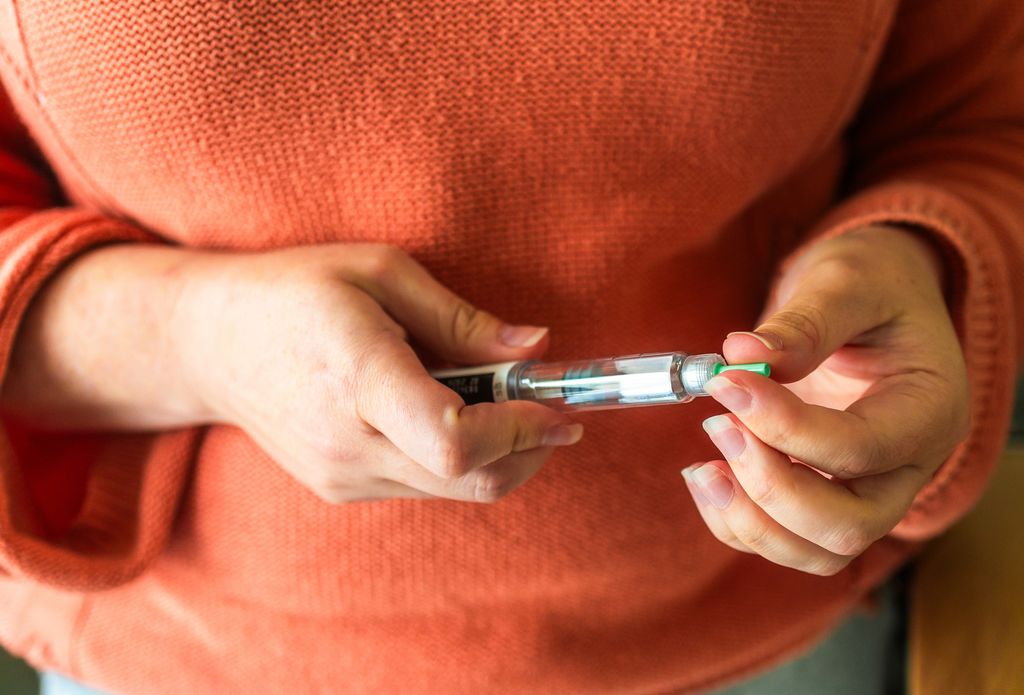If there’s one word which has dominated the weight loss world, it’s GLP-1s. According to the poll RAND, approximately one in 12 Americans are on some form of GLP-1 and one in five women between the ages of 50 and 64 have taken either Mounjaro, Ozempic, Zepbound and Wegovy.
The question is, are they all the same medication or do they actually differ? GLP-1s all work by reducing blood sugar levels, slowing the progress of food along the intestinal track, and stimulating parts of the brain that control craving and satiety. Some use the active ingredient Semaglutide while others use Tirzepatide and each come with different side effects and dosages. Here’s the difference between each.
Ozempic
Ozempic uses the active ingredient Semaglutide but is only approved for those with type 2 diabetes not for general weight loss. You start with a dose of 0.5mg and increase to 1mg via a multi-use injectable pen. Side effects include nausea, vomiting, diarrhoea, stomach pain and constipation.
Wegovy
Wegovy is the same as Ozempic as it uses the same active ingredient Semaglutide, but unlike Ozempic it is approved for weight loss if your Body Mass Index is over 30 or over 27 with other weight related conditions and for obese children from 12 years of age. It differs from Ozempic in the way you can work your way up to a dose of 2.4mg. Side effects are similar to Ozempic as well as indigestion, dizziness, GERD, headaches, fatigue and nose and throat infections.
Mounjaro
Unlike Ozempic and Wegovy, Mounjaro’s active ingredient is Tirzepatide. The starting dose is much higher than Ozempic and Wegovy at 2.5mg, increasing by 2.5mg weekly until a maximum dose of 15mg is achieved. Mounjaro works very similarly to Ozempic and Wegovy but acts as two hormones rather than one. Studies show that users can lose up to 20 per cent of their body weight compared to Ozempic and Wegovy’s 10-15 per cent. Mounjaro is also approved for those with diabetes. Like Ozempic and Wegovy, side effects include nausea, vomiting, diarrhoea, stomach pain and constipation.
Zepbound
Zepbound is the same active ingredient as Mounjaro, with the same dosage, but is approved for those with high blood pressure, diabetes, high cholesterol, heart conditions and obesity or a BMI over 27. Like Ozempic and Wegovy, side effects include nausea, vomiting, diarrhoea, stomach pain, constipation, indigestion, dizziness, GERD, headaches, fatigue and hair loss. Trial data shows that users lost more weight on Mounjaro than Zepbound.
Best foods to eat while on GLP-1s
It’s important to eat a healthy, balanced diet while on the weight loss drug. As constipation is a common side effect, ensure you are having foods rich in fibre such as wholegrains, legumes and plenty of fresh fruit and vegetables. Users can also experience muscle loss while taking GLP-1s so ensuring you are having enough protein is important. Aim for at least 25-30g each meal, so that might be a lean grilled chicken breast, grilled salmon or some tofu which are all good sources of protein. Try my fish rice bowl or shrimp and quinoa stir fry and sheet pan beef tenderloin with veggies as easy, protein-rich, whole food recipes ideal for supporting you while on weight loss medication.
Tips to manage side effects
If you’re still struggling with nausea, bloating or constipation try eating slower and ensuring you are chewing all your food properly before swallowing which can help with indigestion. Ensure you are well hydrated and if you feel waves of nausea, sip on iced ginger tea to help soothe your stomach. After meals, try going for a stroll around the block which can help you with symptoms of indigestion and nausea.
Faye James is a Sydney-based accredited nutritionist and author of The 10:10 Diet, The Menopause Diet, The Long Life Plan and her latest books The Perimenopause Plan and Everyday Easy Vegan
Read the full article here










